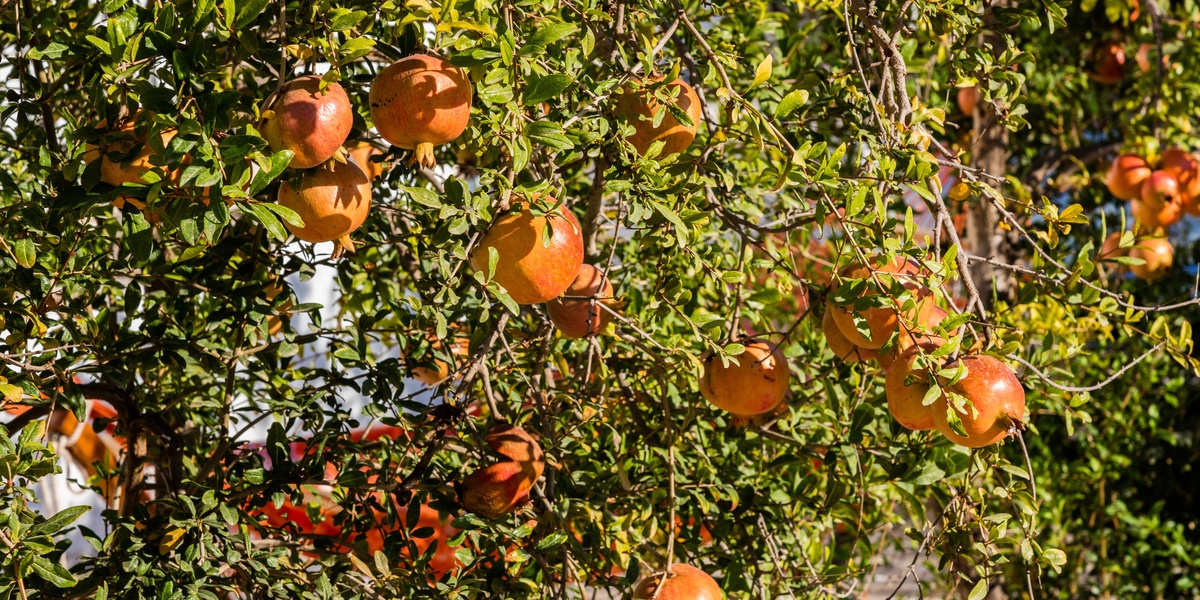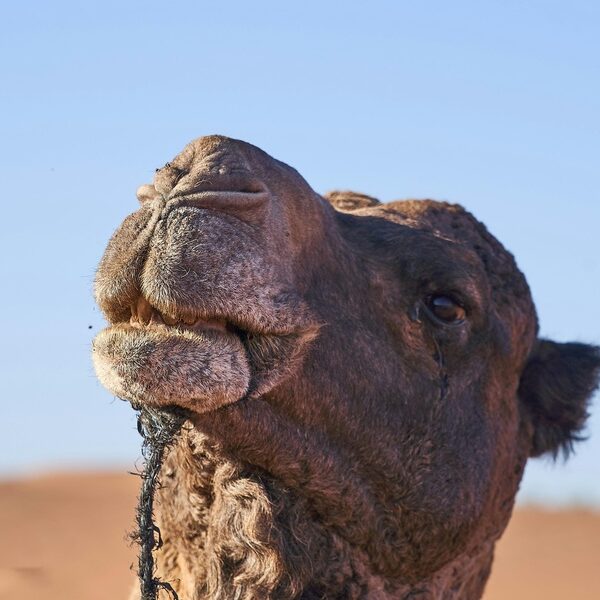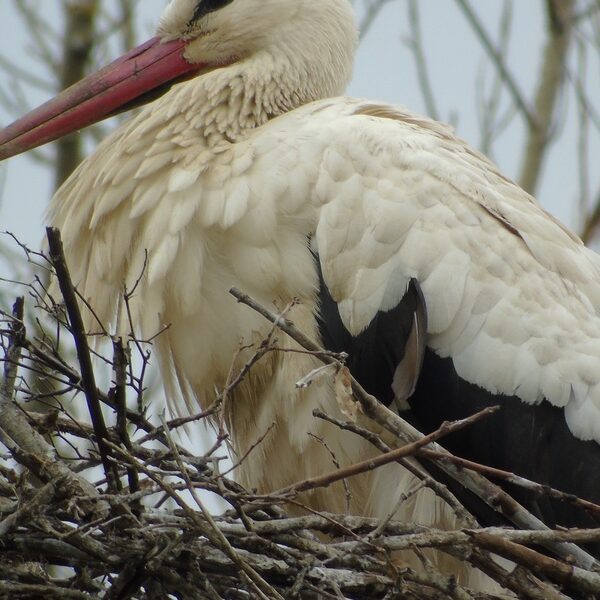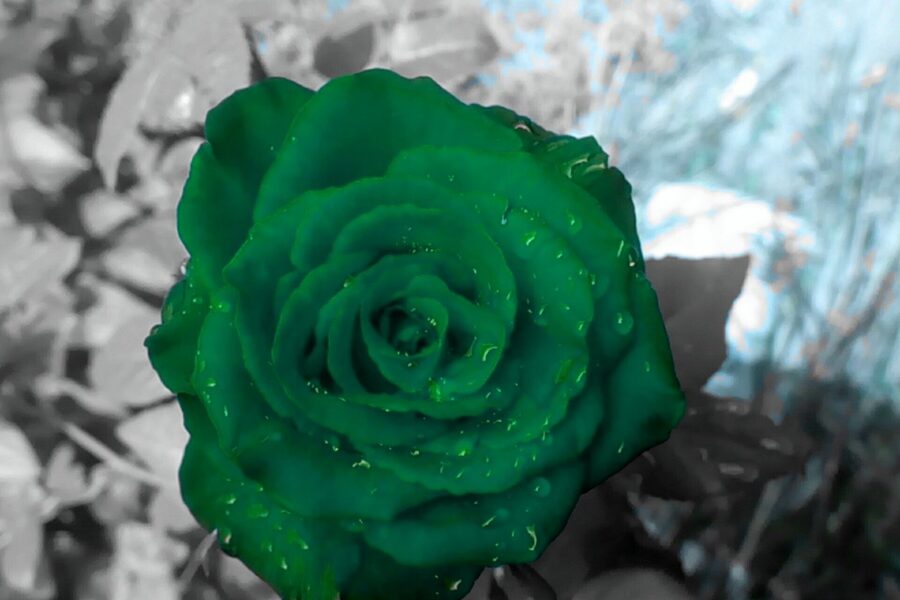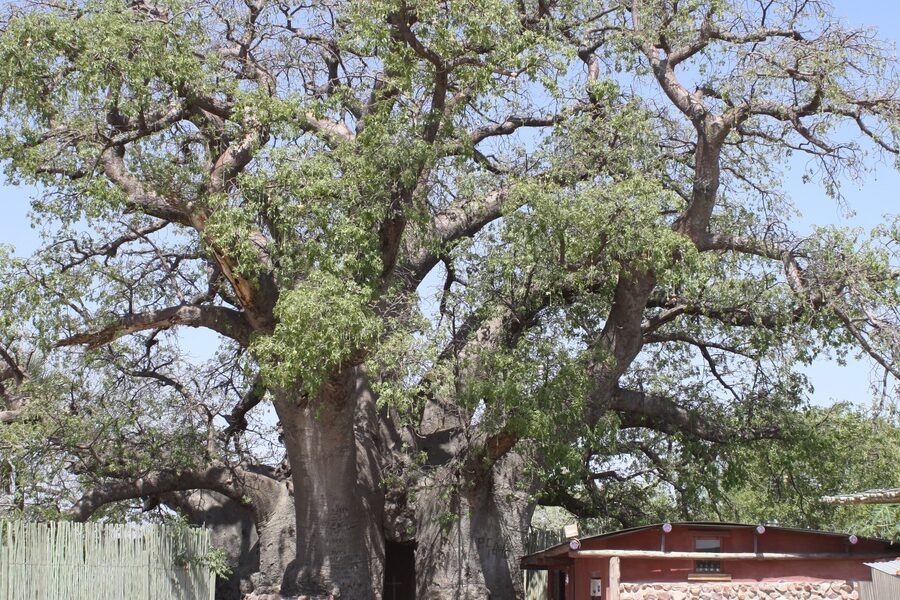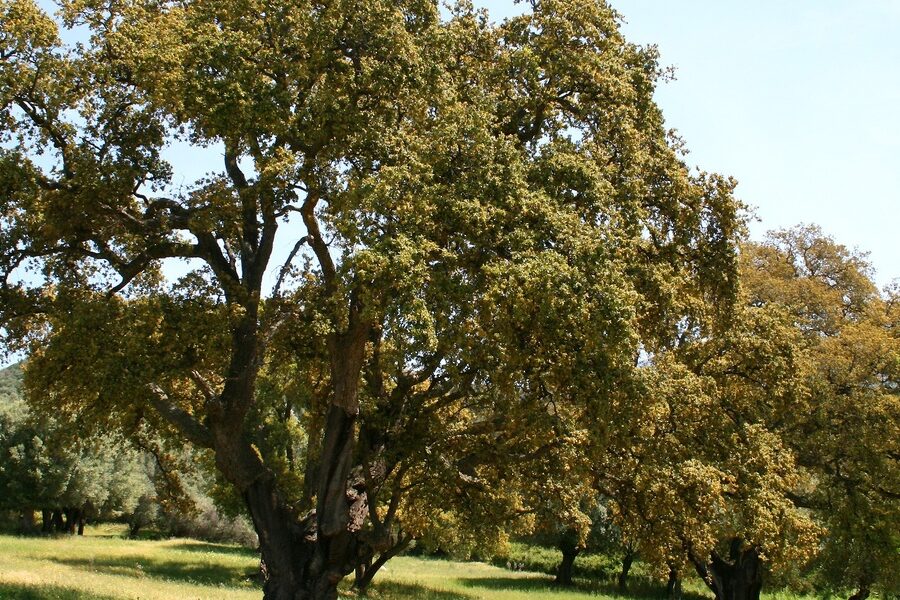From the Caspian coast up through foothills and alpine meadows, Azerbaijan’s landscapes support a wide variety of plant communities. Changes in elevation and microclimate create niches for steppe grasses, wetland reeds, and mountain flowers that tell the story of the region’s natural history.
There are 97 Azerbaijan’s native plants, ranging from Aladag Fritillary to Yellow-horned Poppy. Each entry lists Scientific name,Family,Range in Azerbaijan to aid identification and regional context; examples illustrate how widespread or localized species can be, and you’ll find below.
How can I use this list to identify plants in the field?
Use the Scientific name and Family to cross-check photos and regional guides, then compare the Range in Azerbaijan to your location. Start with obvious features—flower color, leaf shape, habitat—and narrow possibilities before consulting the list for exact matches.
Are any of these species protected or of conservation concern in Azerbaijan?
Some entries are indeed rare or legally protected; the Range information highlights restricted distributions that often correlate with conservation priority. For protected status, check Azerbaijan’s national red list or contact local botanical institutions for up-to-date legal and conservation details.
Azerbaijan’s Native Plants
| Common name | Scientific name | Family | Range in Azerbaijan |
|---|---|---|---|
| Persian Ironwood | Parrotia persica | Hamamelidaceae | Talysh Mountains, Hyrcanian forests. Lowland to 1,400 m. |
| Caucasian Zelkova | Zelkova carpinifolia | Ulmaceae | Talysh Mountains, Hyrcanian forests. 100–1,500 m. |
| Chestnut-leaved Oak | Quercus castaneifolia | Fagaceae | Talysh Mountains, southern Greater Caucasus foothills. Sea level to 2,200 m. |
| Wild Pomegranate | Punica granatum | Lythraceae | Goychay, Kur-Araz lowlands, Talysh foothills. |
| Caucasian Lily | Lilium monadelphum | Liliaceae | Greater and Lesser Caucasus. Subalpine meadows, forest edges. 1,200–2,200 m. |
| Eichler’s Tulip | Tulipa eichleri | Liliaceae | Nakhchivan, Lesser Caucasus, Karabakh. Dry, rocky slopes. |
| Caucasian Rhododendron | Rhododendron caucasicum | Ericaceae | Greater and Lesser Caucasus. Alpine and subalpine zones. 1,600–3,000 m. |
| Oriental Poppy | Papaver orientale | Papaveraceae | Greater and Lesser Caucasus. Mountain meadows and grasslands. |
| Caucasian Snowdrop | Galanthus caucasicus | Amaryllidaceae | Greater Caucasus, Talysh Mountains. Deciduous forests and clearings. |
| Hyrcanian Boxwood | Buxus hyrcana | Buxaceae | Talysh Mountains, Hyrcanian forests. |
| Velvet Maple | Acer velutinum | Sapindaceae | Talysh Mountains, Hyrcanian forests. |
| Wittmann’s Peony | Paeonia wittmanniana | Paeoniaceae | Talysh Mountains, Greater and Lesser Caucasus. Forest margins. |
| Caucasian Whortleberry | Vaccinium arctostaphylos | Ericaceae | Talysh Mountains, Greater Caucasus. Forest understory. 1,500–2,200 m. |
| Hyrcanian Germander | Teucrium hircanicum | Lamiaceae | Talysh Mountains, Caspian coastal areas. |
| Grossheim’s Bellflower | Campanula grossheimii | Campanulaceae | Greater and Lesser Caucasus. Subalpine meadows, rocky slopes. |
| Shusha Carnation | Dianthus shushensis | Caryophyllaceae | Karabakh region (especially around Shusha). Limestone cliffs, rocky areas. |
| Caspian Lotus | Nelumbo caspica | Nelumbonaceae | Kyzyl-Agach Bay, coastal lagoons of the Caspian Sea. |
| Eldar Pine | Pinus brutia var. eldarica | Pinaceae | Eldar Oyugu plain, near Georgian border. Arid, low-altitude slopes. |
| Caucasian Wingnut | Pterocarya fraxinifolia | Juglandaceae | Talysh Mountains, Alazani valley. Riverbanks, wet lowlands. |
| Common Medlar | Mespilus germanica | Rosaceae | Greater and Lesser Caucasus, Talysh. Forest edges, scrubland. |
| Netted Iris | Iris reticulata | Iridaceae | Greater and Lesser Caucasus, Talysh. Rocky slopes, meadows. |
| Bieberstein’s Crocus | Crocus speciosus | Iridaceae | Throughout mountainous regions. Meadows, open woodlands. |
| Crown Imperial | Fritillaria imperialis | Liliaceae | Nakhchivan, Talysh Mountains. Rocky slopes, scrub. |
| Caucasian Scabious | Scabiosa caucasica | Caprifoliaceae | Greater and Lesser Caucasus. Subalpine meadows. 1,500-2,500 m. |
| Alexandrian Laurel | Danae racemosa | Asparagaceae | Talysh Mountains, Hyrcanian forests. |
| Persian Silk Tree | Albizia julibrissin | Fabaceae | Talysh Mountains, Lankaran lowlands. |
| Caspian Honey Locust | Gleditsia caspica | Fabaceae | Talysh Mountains, Hyrcanian forests. |
| Wild Grape | Vitis sylvestris | Vitaceae | Throughout lowland and foothill forests. |
| St. John’s Wort | Hypericum perforatum | Hypericaceae | Widespread in meadows and open areas. |
| Trautvetter’s Thyme | Thymus trautvetteri | Lamiaceae | Greater Caucasus. High mountain rocky slopes. |
| Christ’s Thorn | Paliurus spina-christi | Rhamnaceae | Kur-Araz lowlands, Absheron Peninsula. Dry, rocky areas. |
| Wild Fig | Ficus carica | Moraceae | Absheron Peninsula, Talysh, lowlands. Rocky slopes, river valleys. |
| Oriental Beech | Fagus orientalis | Fagaceae | Greater Caucasus, Talysh Mountains. 700–2,200 m. |
| Caucasian Oak | Quercus macranthera | Fagaceae | Greater and Lesser Caucasus. Montane and subalpine zones. 1,200–2,500 m. |
| Oriental Hornbeam | Carpinus orientalis | Betulaceae | Throughout foothills and mountains. Dry forests and scrub. |
| Caucasian Persimmon | Diospyros lotus | Ebenaceae | Talysh Mountains, Alazani valley. Lowland forests. |
| Common Hawthorn | Crataegus monogyna | Rosaceae | Widespread in scrub, forest edges, and hedgerows. |
| Dog Rose | Rosa canina | Rosaceae | Widespread in scrubland and open woods. |
| Caucasian Lime | Tilia dasystyla subsp. caucasica | Malvaceae | Greater Caucasus, Talysh Mountains. Mixed deciduous forests. |
| Field Elm | Ulmus minor | Ulmaceae | Lowland and riparian forests. |
| Radde’s Birch | Betula raddeana | Betulaceae | Greater Caucasus. Subalpine zone. |
| Common Juniper | Juniperus communis | Cupressaceae | Greater and Lesser Caucasus. Mountain slopes and pastures. |
| Caucasian Pear | Pyrus caucasica | Rosaceae | Throughout Caucasus region. Forests and scrubland. |
| Wild Cherry Plum | Prunus cerasifera | Rosaceae | Throughout foothills and lowlands. Forest edges, river valleys. |
| Blackthorn | Prunus spinosa | Rosaceae | Widespread in scrub and woodland edges. |
| Sosnowsky’s Hogweed | Heracleum sosnowskyi | Apiaceae | Greater Caucasus. Mountain meadows, riverbanks. |
| Caucasian Comfrey | Symphytum caucasicum | Boraginaceae | Greater Caucasus, Talysh. Damp woodlands, meadows. |
| Lallemant’s Dragonhead | Lallemantia iberica | Lamiaceae | Widespread in dry, open habitats. Steppes, semi-deserts. |
| Sweet Briar Rose | Rosa rubiginosa | Rosaceae | Greater and Lesser Caucasus. Scrub and open hillsides. |
| Golden Thistle | Scolymus hispanicus | Asteraceae | Absheron Peninsula, Kur-Araz lowlands. Dry, disturbed ground. |
| Talysh Onion | Allium talyschense | Amaryllidaceae | Talysh Mountains. Montane meadows and rocky slopes. |
| Hyrcanian Iris | Iris demetrii | Iridaceae | Talysh Mountains. |
| Karabakh Tulip | Tulipa karabachensis | Liliaceae | Karabakh, Lesser Caucasus. Mountain steppes and slopes. |
| Caucasian Leopard’s Bane | Doronicum orientale | Asteraceae | Greater and Lesser Caucasus, Talysh. Deciduous woodlands. |
| Colchican Ivy | Hedera colchica | Araliaceae | Talysh Mountains, Hyrcanian forests. |
| Wild Madder | Rubia tinctorum | Rubiaceae | Kur-Araz lowlands, foothills. Dry, scrubby areas. |
| Common Asphodel | Asphodelus aestivus | Asphodelaceae | Absheron Peninsula, coastal lowlands. Dry, rocky ground. |
| Summer Snowflake | Leucojum aestivum | Amaryllidaceae | Lankaran lowlands, coastal wetlands. |
| Caspian Sea-lavender | Limonium caspium | Plumbaginaceae | Caspian Sea coast. Saline soils, salt marshes. |
| Szovits’s Crocus | Crocus szovitsianus | Iridaceae | Talysh Mountains, Nakhchivan. Alpine meadows. |
| Oriental Grape Hyacinth | Muscari neglectum | Asparagaceae | Widespread in grassy and rocky places. |
| Caucasian Pasqueflower | Pulsatilla violacea | Ranunculaceae | Greater and Lesser Caucasus. Subalpine and alpine meadows. |
| Aladag Fritillary | Fritillaria aladaghensis | Liliaceae | Nakhchivan. High-altitude rocky slopes. |
| Yellow Pheasant’s Eye | Adonis vernalis | Ranunculaceae | Greater Caucasus, Nakhchivan. Steppes and dry meadows. |
| Giant Fennel | Ferula communis | Apiaceae | Absheron Peninsula, Gobustan. Dry, rocky hillsides. |
| Caucasian Stonecrop | Sedum caucasicum | Crassulaceae | Greater Caucasus. Rocky outcrops and scree slopes. |
| Caucasian Sweetvetch | Hedysarum caucasicum | Fabaceae | Greater and Lesser Caucasus. Mountain meadows and slopes. |
| Mountain Avens | Dryas caucasica | Rosaceae | Greater Caucasus. Alpine tundra, rocky ridges. |
| Caucasian Corydalis | Corydalis caucasica | Papaveraceae | Greater Caucasus. Forests and stony slopes. |
| Shrenk’s Tulip | Tulipa schrenkii | Liliaceae | Kur-Araz steppe, Absheron. Semi-desert and steppe regions. |
| Common Yew | Taxus baccata | Taxaceae | Talysh Mountains, Greater Caucasus. Mixed forests. |
| Common Hazel | Corylus avellana | Betulaceae | Throughout forested regions. |
| Spiny Hawthorn | Crataegus pentagyna | Rosaceae | Greater Caucasus, Kur-Araz lowlands. Dry forests and scrub. |
| Common Barberry | Berberis vulgaris | Berberidaceae | Greater and Lesser Caucasus. Forest edges, rocky slopes. |
| European Spindle | Euonymus europaeus | Celastraceae | Throughout forested regions. Woodland edges and scrub. |
| Wayfaring Tree | Viburnum lantana | Adoxaceae | Greater and Lesser Caucasus. Scrub and open woodlands. |
| Butcher’s Broom | Ruscus aculeatus | Asparagaceae | Talysh Mountains. Forest understory. |
| Black Bryony | Tamus communis | Dioscoreaceae | Talysh Mountains, lowland forests. |
| Common Polypody | Polypodium vulgare | Polypodiaceae | Throughout forested regions. On rocks, walls, and tree branches. |
| Caucasian Burnet | Pimpinella peregrina | Apiaceae | Greater and Lesser Caucasus. Meadows and forest margins. |
| Field Eryngo | Eryngium campestre | Apiaceae | Widespread in dry, grassy places and steppes. |
| Yellow-horned Poppy | Glaucium flavum | Papaveraceae | Caspian Sea coast. Sandy and shingle beaches. |
| Woad | Isatis tinctoria | Brassicaceae | Dry hills and disturbed areas. |
| Elecampane | Inula helenium | Asteraceae | Greater Caucasus, Talysh. Damp meadows, woodland clearings. |
| Common Mallow | Malva sylvestris | Malvaceae | Widespread in disturbed ground, roadsides. |
| Greater Celandine | Chelidonium majus | Papaveraceae | Widespread in shaded, damp places, often near human habitation. |
| Wild Clary | Salvia sclarea | Lamiaceae | Widespread in dry, stony places. |
| Mullein | Verbascum densiflorum | Scrophulariaceae | Widespread in open, disturbed ground. |
| White Horehound | Marrubium vulgare | Lamiaceae | Dry, overgrazed, and disturbed areas. |
| Creeping Bugle | Ajuga reptans | Lamiaceae | Throughout forested areas. Damp woods and meadows. |
| Wood Anemone | Anemone nemorosa | Ranunculaceae | Deciduous woodlands. |
| Bladder Campion | Silene vulgaris | Caryophyllaceae | Widespread in grasslands, roadsides, and open areas. |
| Purple Loosestrife | Lythrum salicaria | Lythraceae | Wetlands, riverbanks, and marshes. |
| Common Valerian | Valeriana officinalis | Caprifoliaceae | Damp grasslands and riverbanks. |
| Meadowsweet | Filipendula ulmaria | Rosaceae | Damp meadows, marshes, and fens. |
| Hemp-agrimony | Eupatorium cannabinum | Asteraceae | Damp ground, riverbanks, and fens. |
| Wild Teasel | Dipsacus fullonum | Caprifoliaceae | Roadsides, riverbanks, and rough grassland. |
Images and Descriptions
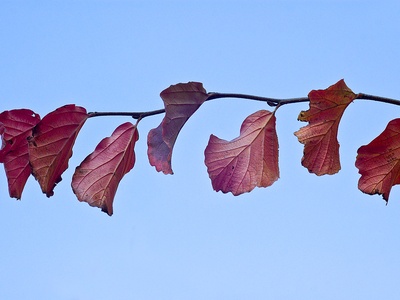
Persian Ironwood
A stunning deciduous tree famous for its incredibly dense wood that sinks in water. It features beautiful exfoliating bark and brilliant autumn foliage in shades of yellow, orange, and crimson, a relict species from the Tertiary period characteristic of the unique Hyrcanian forests.

Caucasian Zelkova
A majestic, long-lived relict tree with a distinctive vase-shaped crown and smooth, grey bark. It’s a key component of the ancient Hyrcanian forests, a living fossil that survived the ice ages. Its durable timber has been traditionally used for construction and furniture.
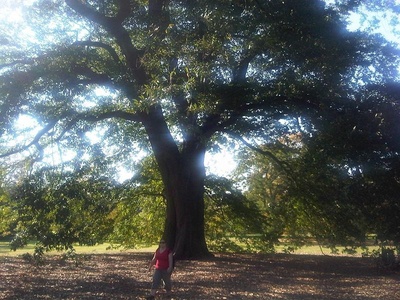
Chestnut-leaved Oak
A large, impressive oak tree with long, toothed leaves resembling those of a sweet chestnut. It forms extensive forests in the Hyrcanian region, providing a critical habitat for wildlife and producing acorns that are an important food source for many local animals.
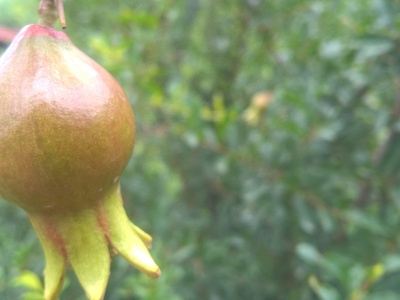
Wild Pomegranate
The wild ancestor of the cultivated pomegranate, this spiny shrub or small tree produces smaller, more acidic fruits. It’s a symbol of Azerbaijan, celebrated for its vibrant red flowers and historical significance. Wild populations are crucial for genetic diversity and conservation.
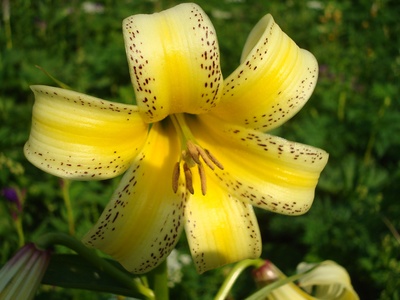
Caucasian Lily
A magnificent lily bearing large, fragrant, downward-facing yellow flowers, often speckled with purple. It blooms in early summer, adding a splash of gold to mountain meadows and forest clearings. It is a highly sought-after but protected ornamental plant.
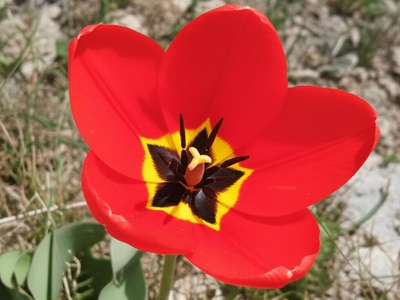
Eichler’s Tulip
A striking wild tulip that paints the arid slopes crimson in spring. It features large, brilliant red flowers with a black, yellow-bordered blotch at the base of each petal. This species is a treasured part of Azerbaijan’s rich wild tulip diversity.
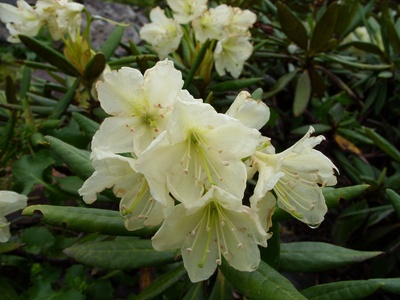
Caucasian Rhododendron
A hardy, low-growing evergreen shrub forming dense thickets on high mountain slopes. In early summer, it produces spectacular clusters of creamy-white to pale pink, bell-shaped flowers. It is well-adapted to harsh alpine conditions and is a stunning sight above the treeline.
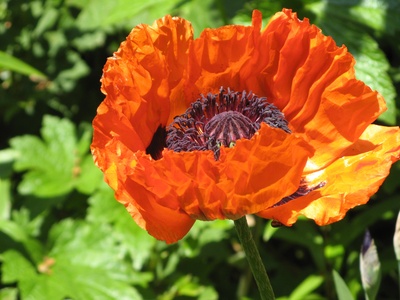
Oriental Poppy
Famous for its huge, brilliant scarlet-orange flowers with a dark purple-black blotch at the base of the petals. This perennial poppy is a dramatic and eye-catching feature of subalpine meadows in late spring and early summer, attracting numerous pollinators.
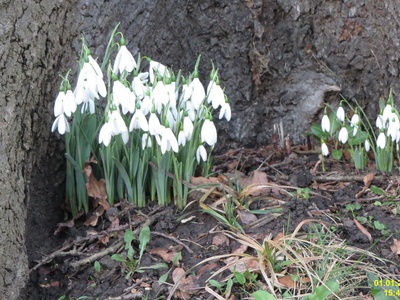
Caucasian Snowdrop
One of the first signs of spring, this snowdrop emerges through the late snow with its delicate, nodding white flowers. Each outer petal has a green marking at its tip. It carpets the forest floor, providing an early nectar source for insects.
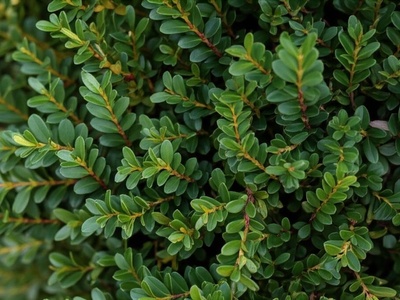
Hyrcanian Boxwood
A slow-growing evergreen shrub or small tree native to the unique Hyrcanian forests. It has small, glossy, dark green leaves and is highly valued for its dense, fine-grained wood. It often grows as an understory plant in the shade of larger trees.
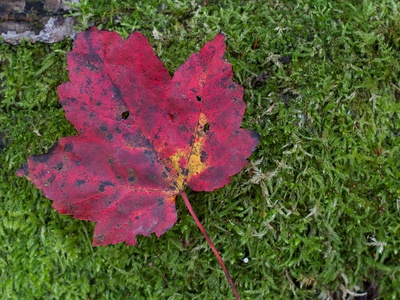
Velvet Maple
The largest maple species in the Caucasus region, this impressive tree can reach great heights. It is named for the soft, velvety hairs on the undersides of its large, lobed leaves. It is a key component of the moist, temperate Hyrcanian forests.
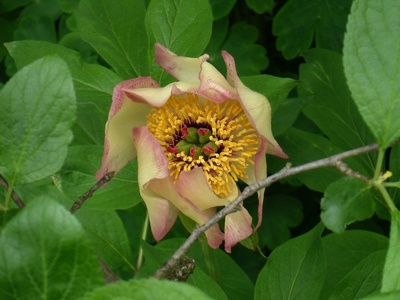
Wittmann’s Peony
A breathtaking wild peony with large, bowl-shaped flowers that range from creamy white to pale yellow. Blooming in late spring, it is a rare and protected beauty of the Caucasian forests. Its large, divided leaves add to its ornamental appeal.
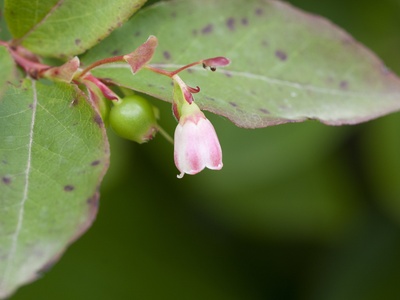
Caucasian Whortleberry
A deciduous shrub related to blueberries, growing in the understory of mountain forests. It produces small, bell-shaped, pale pink flowers followed by edible, dark purple berries. The berries are collected locally for making jams and drinks, and the leaves for herbal tea.

Hyrcanian Germander
A lovely perennial herb with spikes of vibrant purple-pink flowers that bloom throughout the summer. It’s a tough, drought-tolerant plant that attracts bees and butterflies, often found in woodland clearings and on rocky slopes. It is popular in cultivation for its long blooming season.
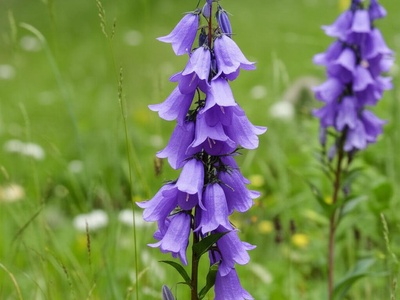
Grossheim’s Bellflower
An elegant bellflower endemic to the Caucasus region. It produces tall spikes of large, nodding, pale blue to violet bell-shaped flowers in summer. This beautiful perennial is a characteristic plant of the vibrant high-altitude meadows of Azerbaijan’s mountains.
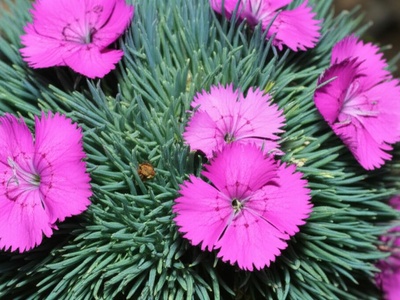
Shusha Carnation
A rare and beautiful carnation, endemic to the Karabakh region. It forms neat cushions of grassy, blue-green foliage from which rise fragrant, fringed pink or lilac flowers in summer. This plant is a symbol of the unique flora of the Shusha area.
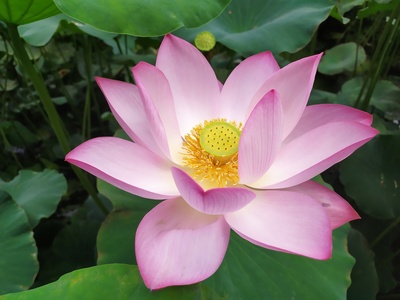
Caspian Lotus
A spectacular aquatic plant, often considered a relict species. It features large, circular leaves that rise above the water and magnificent, fragrant pink flowers. This lotus is a protected natural treasure, forming beautiful colonies in the shallow waters of Caspian coastal lagoons.
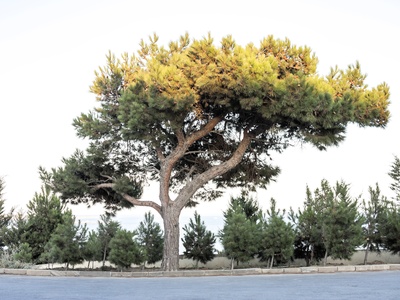
Eldar Pine
A highly drought-resistant pine, famous for its isolated, relict grove on the dry slopes of the Eldar Oyugu plain. It has a distinctive flat-topped crown and is remarkably adapted to semi-desert conditions. This pine is a protected natural monument of Azerbaijan.
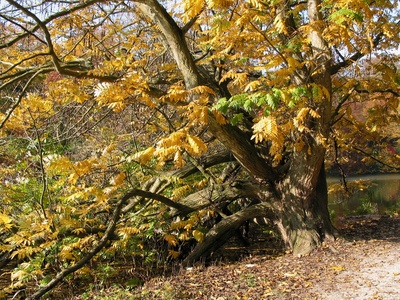
Caucasian Wingnut
A fast-growing, large deciduous tree in the walnut family, often found along rivers and streams. It is easily recognized by its long, drooping catkins of winged nuts that hang in chains. It’s a dominant species in riverine gallery forests.
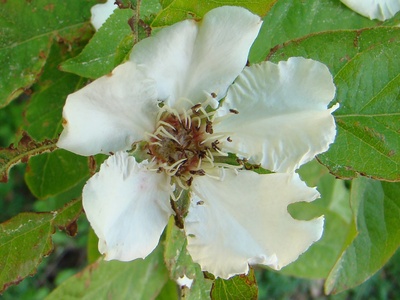
Common Medlar
A small, thorny tree or large shrub known for its unusual, apple-like fruits. The fruits are hard and acidic until they are “bletted” or softened by frost, after which they develop a sweet, brown flesh. It has attractive white flowers in late spring.
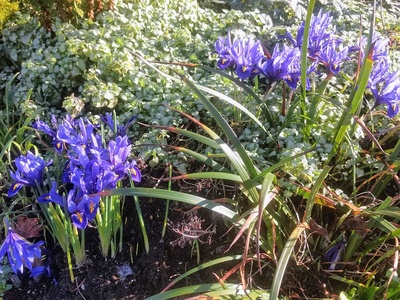
Netted Iris
A small but brilliant early spring flower. It pushes through the cold soil to reveal deep violet-blue flowers with intricate yellow markings. Its name comes from the net-like pattern on the surface of its bulb. It is a favorite among gardeners worldwide.
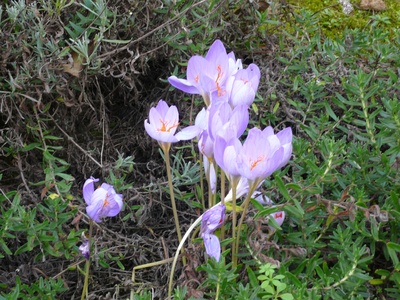
Bieberstein’s Crocus
An autumn-flowering crocus that brings a splash of color as the year wanes. It has large, lilac-blue flowers with prominent, bright orange stigmas. It often forms extensive carpets of color in subalpine meadows after the summer heat has passed.
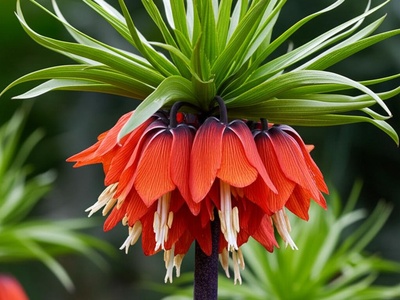
Crown Imperial
A truly majestic plant with a stout stem topped by a ring of large, nodding, bell-shaped orange or red flowers. Above the flowers sits a crown of small, leaf-like bracts. It has a distinct foxy odor but is a spectacular sight in spring.
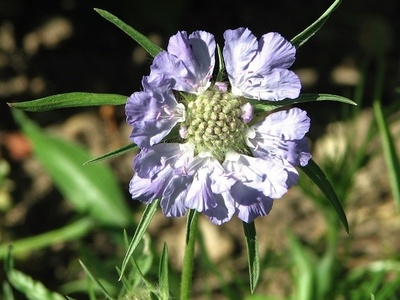
Caucasian Scabious
A classic meadow flower with large, pincushion-like blooms in shades of lavender-blue. It has a long blooming season throughout the summer, attracting butterflies and bees. It’s the wild ancestor of many popular garden varieties, valued for its delicate, frilly appearance.
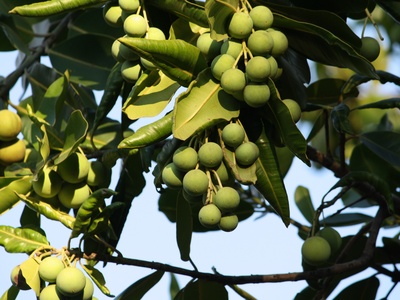
Alexandrian Laurel
A graceful, shade-loving evergreen shrub. What appear to be leaves are actually flattened stems called cladodes. It produces small, greenish-white flowers followed by bright red berries in autumn, adding color to the forest understory. It’s another relict of the ancient Hyrcanian flora.
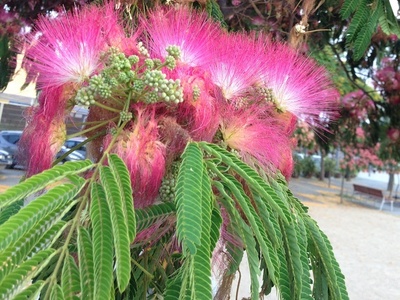
Persian Silk Tree
A beautiful, small deciduous tree with fern-like leaves and a broad, umbrella-shaped canopy. In summer, it is covered in fragrant, fluffy pink flower clusters that look like silky threads. It is a common and beloved feature of the Hyrcanian forest region.
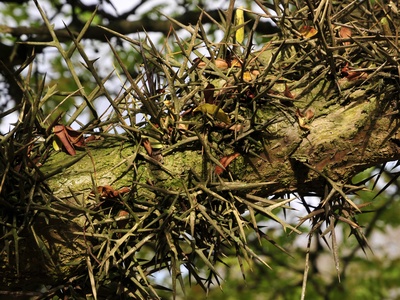
Caspian Honey Locust
A large, deciduous tree armed with formidable, branched thorns on its trunk and branches. It is endemic to the Hyrcanian forest region. It produces long, twisted seed pods and has fine, feathery foliage, making it a distinctive and well-defended member of the forest.
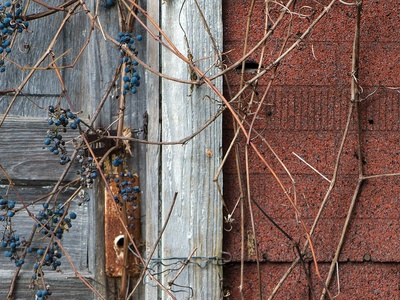
Wild Grape
The wild ancestor of most cultivated wine grapes. This climbing vine uses tendrils to scale trees in riparian forests. It produces small, tart, dark purple grapes that are an important food source for birds and mammals, and a key part of our viticultural heritage.
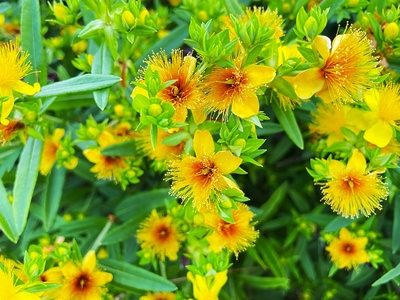
St. John’s Wort
A well-known medicinal herb with cheerful yellow flowers that bloom around the summer solstice. The flowers and leaves have translucent dots that look like perforations and release a red oil when crushed. It has been used for centuries in traditional medicine.
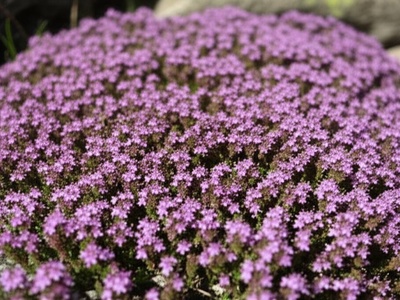
Trautvetter’s Thyme
A species of wild thyme forming low, aromatic mats on the high, rocky slopes of the Caucasus. In summer, it is covered in a haze of tiny pink or purple flowers, attracting alpine insects. Its strong fragrance is a characteristic scent of the mountain air.
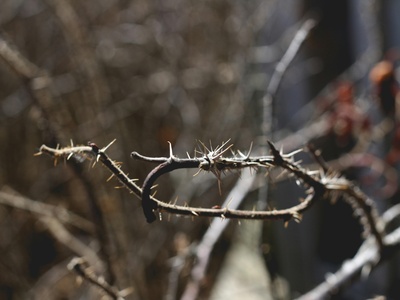
Christ’s Thorn
A deciduous shrub or small tree, densely armed with pairs of sharp thorns, one straight and one hooked. It produces clusters of small, yellowish-green flowers, followed by unique, dry, disc-shaped fruits that look like tiny hats. It’s incredibly drought-tolerant.
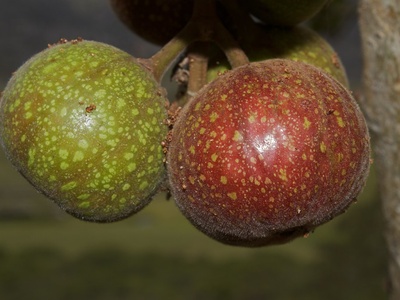
Wild Fig
The wild form of the common fig, growing as a large shrub or small tree in warmer parts of Azerbaijan. It produces edible figs that are an important food for wildlife. These wild populations are genetically diverse and adapted to local conditions.
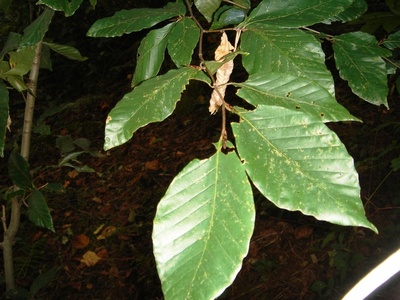
Oriental Beech
A dominant forest-forming tree in Azerbaijan’s mountains, closely related to the European Beech. It has smooth, silver-grey bark and creates a dense canopy that shades the forest floor. Its nuts, or mast, are a vital food source for wildlife.

Caucasian Oak
A hardy, often shrubby oak that grows at high elevations, frequently forming the treeline. Its leaves have a dense, yellowish-grey felt on their undersides. It is well-adapted to the harsh conditions of the high mountains, growing where other oaks cannot.
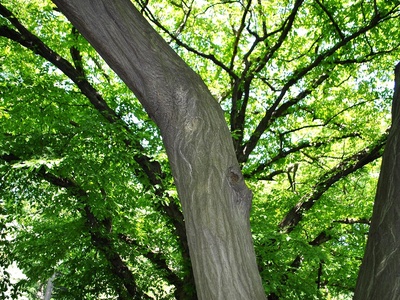
Oriental Hornbeam
A small tree or large shrub, often a key component of dry, deciduous forests and scrubland. It has a fluted, muscular-looking trunk and finely toothed leaves. It’s a tough, drought-tolerant species that thrives on sunny slopes and provides important browse for wildlife.
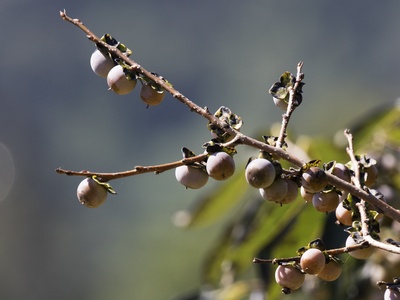
Caucasian Persimmon
Also known as date-plum, this tree is a relative of the cultivated persimmon. It produces small, cherry-sized fruits that turn yellow-orange to bluish-black when ripe. The fruits are astringent until fully ripened by frost, after which they become sweet and edible.
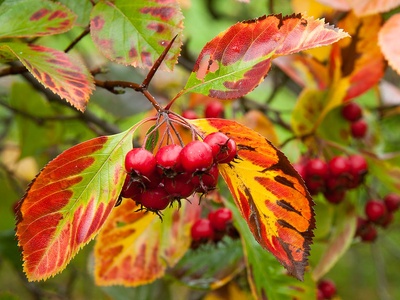
Common Hawthorn
A dense, thorny shrub or small tree, famous for its clouds of white, fragrant blossoms in spring, followed by bright red berries (haws) in autumn. It’s an incredibly important plant for wildlife, providing food, shelter, and nesting sites for birds and insects.
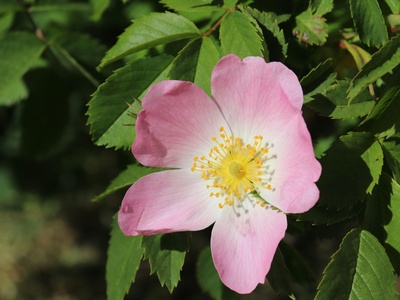
Dog Rose
The most common wild rose in the region, a scrambling shrub with arching, thorny stems. It produces delicate, pale pink or white flowers followed by iconic, vitamin C-rich red hips. The hips are widely gathered in autumn to make teas, syrups, and jams.
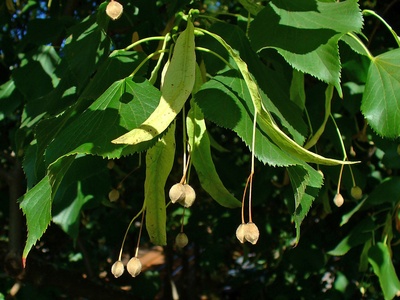
Caucasian Lime
A large, graceful deciduous tree with heart-shaped leaves. In early summer, it bears clusters of highly fragrant, creamy-yellow flowers that are a major nectar source for bees. The flowers are traditionally gathered to make a soothing herbal tea.
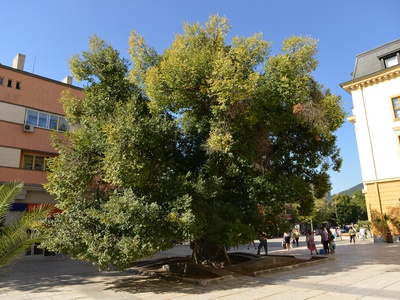
Field Elm
A native elm that was once a common sight in lowland and riverside forests. It’s a tall, graceful tree with a distinctive shape. While populations have been affected by Dutch elm disease, resistant wild trees are vital for the species’ survival in the region.
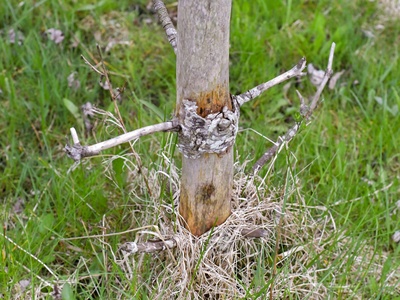
Radde’s Birch
A rare and elegant birch tree endemic to the Caucasus. It is distinguished by its peeling, pinkish-white or coppery bark. It grows in subalpine forests and open woodlands, often on steep, rocky slopes, and is a protected species due to its limited range.
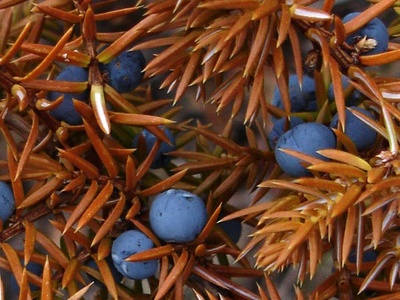
Common Juniper
An evergreen conifer that can grow as a tall, slender tree or a low, spreading shrub depending on the altitude and conditions. Its sharp, needle-like leaves and berry-like blue-black cones are characteristic. The “berries” are famously used to flavor gin.
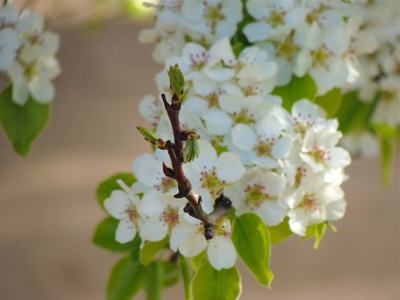
Caucasian Pear
A wild pear species that is one of the ancestors of cultivated European pears. It’s a spiny, deciduous tree with beautiful white blossoms in spring. The small, hard fruits become more palatable after a frost and are eaten by wildlife.
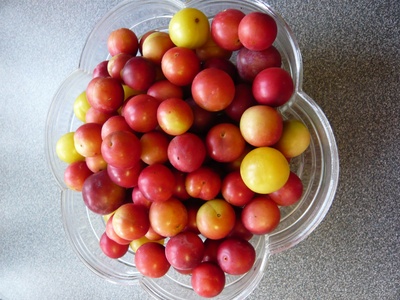
Wild Cherry Plum
One of the first trees to flower in spring, erupting in a cloud of white blossoms before its leaves appear. It is the wild ancestor of cultivated cherry plums and some domestic plums. Its small, edible yellow or red fruits are tart but tasty.
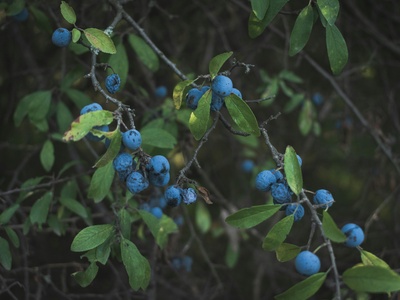
Blackthorn
A fiercely thorny, thicket-forming shrub that is covered in a mass of brilliant white flowers in early spring. In autumn, it produces astringent, bluish-black fruits called sloes. The sloes are traditionally used after the first frost to make sloe gin and jams.
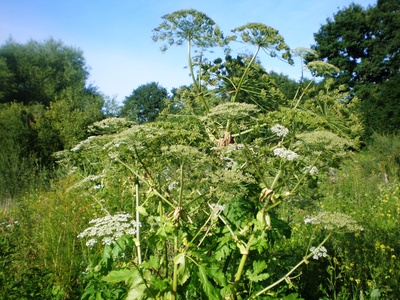
Sosnowsky’s Hogweed
A giant, monumental perennial herb native to the Caucasus. It can grow up to 5 meters tall with huge, umbrella-like white flower heads. While impressive, its sap is phototoxic and can cause severe skin burns, so it should be admired from a distance.
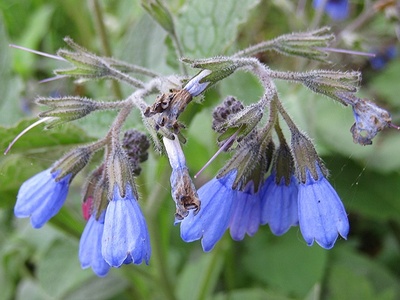
Caucasian Comfrey
A handsome perennial with bristly leaves and arching sprays of bright blue, bell-shaped flowers that fade to pink. It is a robust plant that spreads to form large clumps, providing a long season of color and attracting bees.

Lallemant’s Dragonhead
An annual herb known for its oil-rich seeds. It has spikes of blue or violet flowers and is adapted to arid and semi-arid conditions. It is sometimes cultivated locally for its oil, which has various traditional uses.
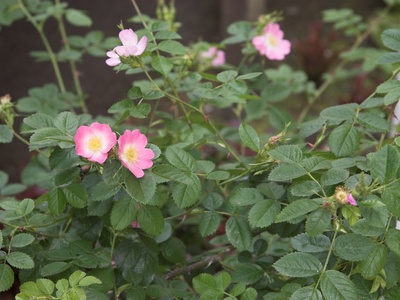
Sweet Briar Rose
A wild rose known for its beautiful pink flowers and, most notably, its apple-scented foliage. On a warm, damp day, the fragrance from its leaves can fill the air. It produces red hips in the autumn, similar to other wild roses.
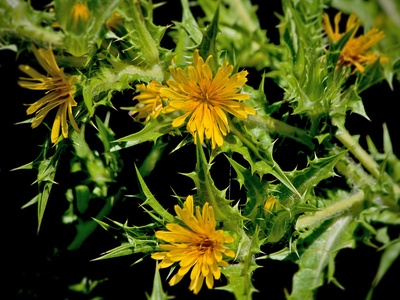
Golden Thistle
A spiny, thistle-like plant with striking, bright yellow flower heads that appear in summer. Despite its formidable appearance, the roots and young stems are traditionally consumed as a vegetable in some regions, showcasing its use as a wild food source.
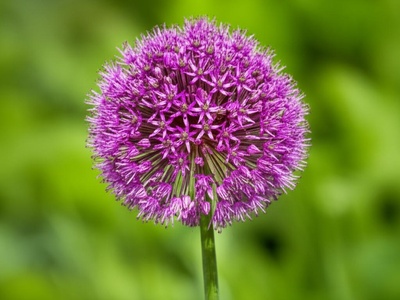
Talysh Onion
A beautiful ornamental onion endemic to the Talysh Mountains. It produces a spherical umbel of star-shaped, pinkish-purple flowers on a tall stem in early summer. This plant is a unique part of the region’s rich bulbous flora.
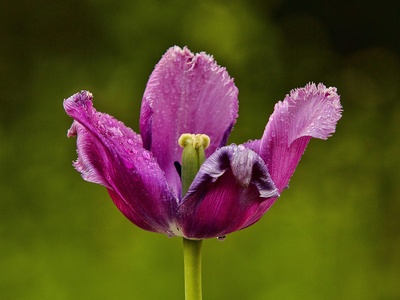
Hyrcanian Iris
A beardless iris endemic to the Hyrcanian forest region. It has delicate, graceful flowers, typically in shades of pale blue or violet, with intricate yellow and white markings on the falls. It grows in damp meadows and forest clearings within its limited range.
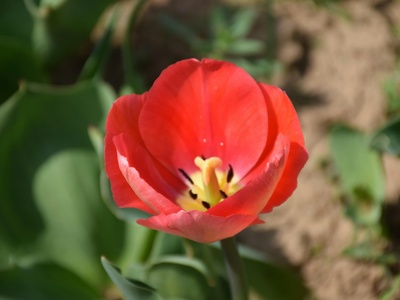
Karabakh Tulip
An elegant wild tulip native to the Karabakh highlands. It typically has yellow or reddish flowers, often with a slender, graceful form. This species contributes to the spectacular display of wild tulips that bloom across the mountain steppes in spring.

Caucasian Leopard’s Bane
One of the earliest-blooming daisy-like flowers, producing cheerful, bright yellow flowers in spring. It thrives in the dappled shade of deciduous forests, often forming lovely carpets of yellow before the trees have fully leafed out.
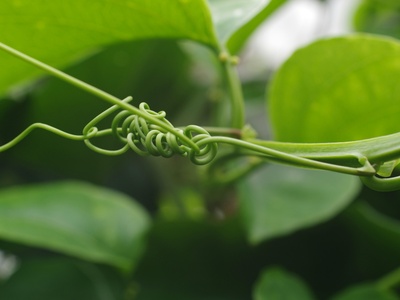
Colchican Ivy
A vigorous, evergreen climbing vine with large, leathery, unlobed heart-shaped leaves. It is a characteristic plant of the Hyrcanian forests, climbing high into the canopy of trees. It produces small, greenish flowers followed by black berries.

Wild Madder
A scrambling perennial herb whose roots are the historical source of the red dye alizarin. It has whorls of prickly leaves and small, yellowish flowers. Wild populations represent the genetic origins of this culturally important dye plant.
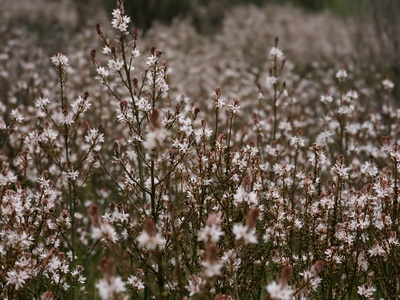
Common Asphodel
A striking perennial with a basal rosette of long, strap-like leaves and a tall, branching flower spike. The spike is covered in white, star-shaped flowers with a distinctive brown stripe on each petal. It is a characteristic plant of dry, sunny Mediterranean-type habitats.
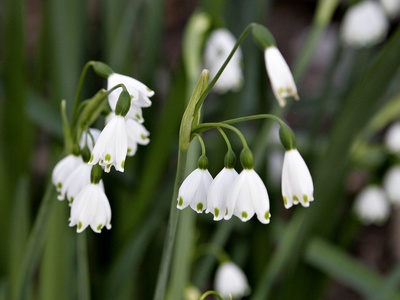
Summer Snowflake
Despite its name, this plant flowers in spring, not summer. It resembles a large snowdrop, producing nodding, bell-shaped white flowers, each petal tipped with a dot of green. It grows in wet meadows and marshy areas, often forming impressive clumps.
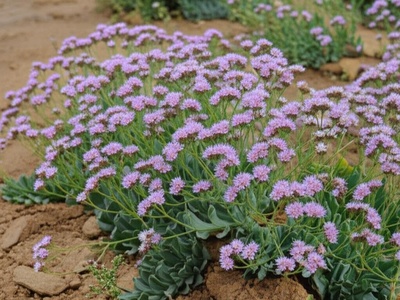
Caspian Sea-lavender
A plant adapted to the harsh, salty conditions of the Caspian coast. It has a basal rosette of leathery leaves and produces wiry, branching stems with a haze of tiny, papery, lavender-colored flowers in summer. It’s a true coastal specialist.
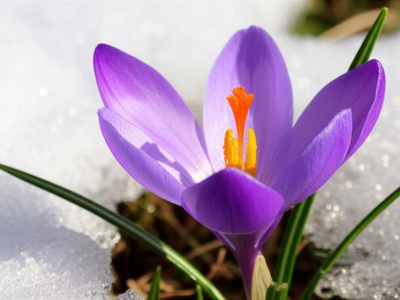
Szovits’s Crocus
A spring-flowering crocus that often blooms at the edge of melting snow. Its flowers can be lilac, purple, or white, and it is one of the many beautiful crocus species that adorn the mountain meadows of Azerbaijan in early spring.
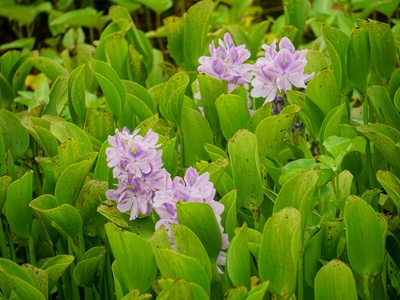
Oriental Grape Hyacinth
A common and lovely spring bulb. It produces dense spikes of small, urn-shaped, deep cobalt-blue flowers, each tipped with a tiny white rim, looking like a miniature cluster of grapes. It often forms extensive, vivid blue carpets in the wild.
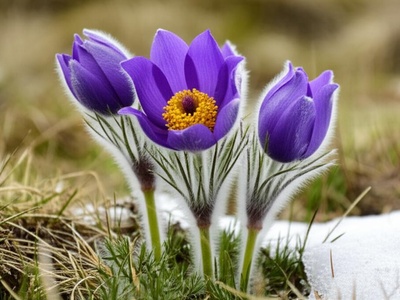
Caucasian Pasqueflower
A beautiful alpine flower that blooms in spring, sometimes straight after the snow melts. It has large, bell-shaped, violet flowers covered in silky hairs, which protect it from the cold. The feathery seed heads that follow are also highly ornamental.
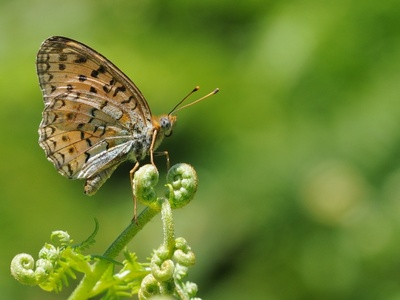
Aladag Fritillary
A rare and beautiful fritillary with nodding, bell-shaped flowers. The flowers are typically a dusky purple or brownish color, checkered with shades of green or yellow, a classic pattern for the genus. It is a gem for plant enthusiasts in the high mountains.
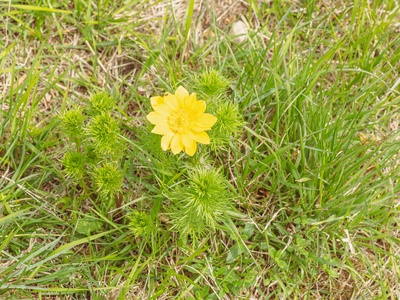
Yellow Pheasant’s Eye
A beautiful spring-flowering perennial with feathery, fern-like foliage. It produces large, glossy, bright yellow flowers that open in the sun. It is a striking sight in the open steppes but is toxic and has uses in traditional medicine.
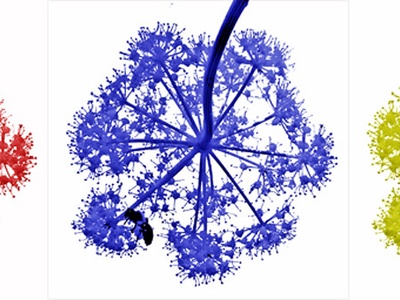
Giant Fennel
A towering herbaceous perennial that sends up a thick, impressive flower stalk, sometimes over 3 meters tall. The stalk is topped by large, umbrella-like clusters of tiny yellow flowers. The entire plant has a strong, aromatic scent.
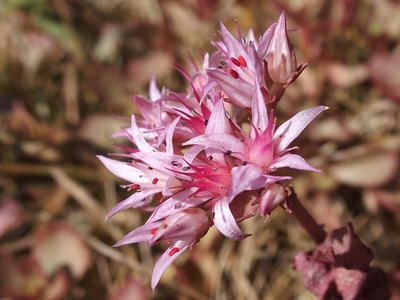
Caucasian Stonecrop
A succulent plant perfectly adapted to dry, rocky environments. It forms mats of fleshy, water-storing leaves and produces clusters of star-shaped, typically white or pinkish flowers in summer. It is a hardy survivor in the harsh mountain terrain.
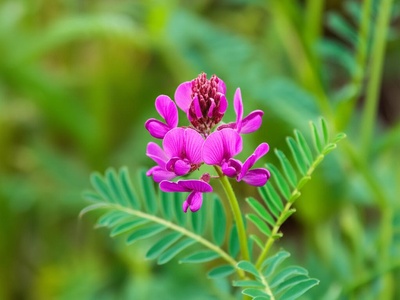
Caucasian Sweetvetch
A perennial legume with pinnate leaves and attractive racemes of pinkish-purple flowers. Like other sweetvetches, it is an important part of meadow ecosystems, fixing nitrogen in the soil and providing forage for animals.
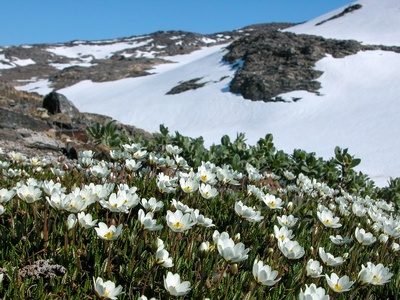
Mountain Avens
A low-growing, mat-forming evergreen subshrub adapted to the harsh conditions of high-alpine zones. It has small, oak-like leaves and beautiful, solitary white flowers with a yellow center. It is a classic arctic-alpine plant, a relict from colder periods.
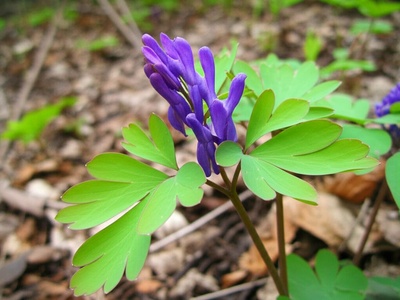
Caucasian Corydalis
An early spring ephemeral that flowers and sets seed before the forest canopy closes. It has delicate, fern-like blue-green foliage and clusters of unusually shaped, tubular flowers, often in shades of purple or white.
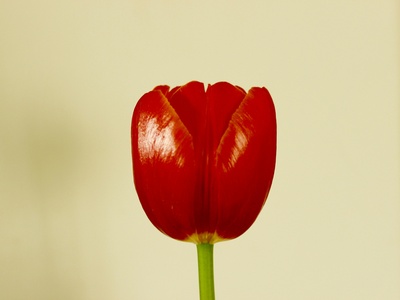
Shrenk’s Tulip
A wild tulip with an incredible diversity of colors, from red and yellow to pink, white, and bicolored forms. It is considered one of the primary ancestors of the modern garden tulip. It creates spectacular, but threatened, displays in the steppes.
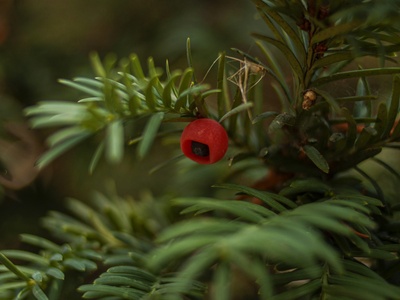
Common Yew
An ancient, evergreen coniferous tree with soft, dark green needles and distinctive red, fleshy fruits called arils. It is often found as an understory tree in beech and hornbeam forests. Nearly all parts of the tree are toxic, except for the fleshy red aril.
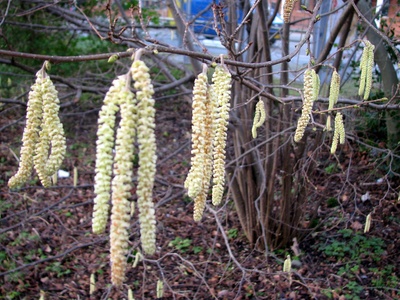
Common Hazel
A multi-stemmed shrub or small tree, common in the understory of deciduous woodlands. It is one of the first plants to flower in late winter, with long, yellow male catkins. In autumn, it produces the well-known and edible hazelnuts, encased in a leafy husk.
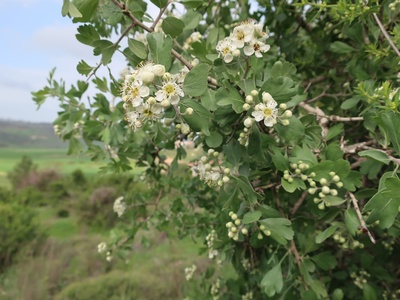
Spiny Hawthorn
A species of hawthorn common in eastern parts of the region. It has deeply lobed leaves and produces clusters of white flowers. Its dark, purplish-black berries distinguish it from the common red-berried hawthorn.
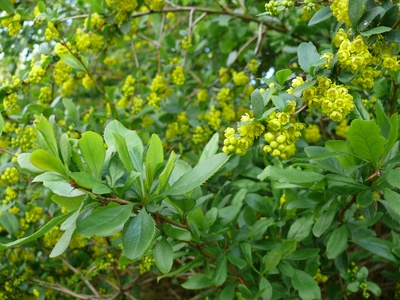
Common Barberry
A deciduous shrub with spiny stems and small, oval leaves. In spring, it has drooping clusters of yellow flowers, followed in autumn by bright red, oblong, edible but very acidic berries. The berries are rich in vitamin C and used to make preserves.
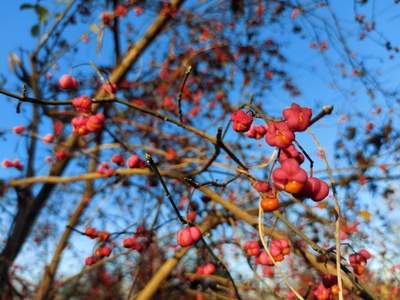
European Spindle
A large shrub or small tree, most famous for its spectacular autumn fruits. The fruits are four-lobed, bright pinkish-red capsules that split open to reveal brilliant orange seeds. The autumn foliage is also a vibrant red.
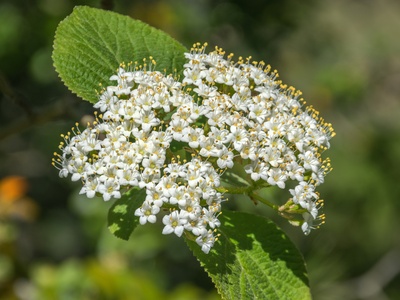
Wayfaring Tree
A large, deciduous shrub with wrinkled, grey-green leaves. It produces flat-topped clusters of creamy-white flowers in late spring, which are followed by berries that change color from red to black as they ripen.
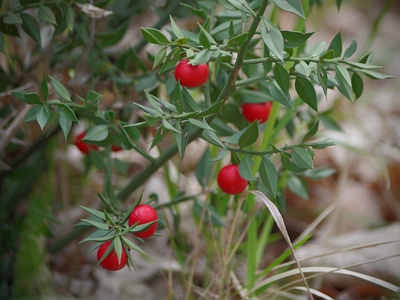
Butcher’s Broom
A peculiar, low-growing evergreen shrub with stiff, spiny, flattened stems that function as leaves. Small, greenish-white flowers grow directly from the center of these “leaves,” followed by large, bright red berries that persist through winter.
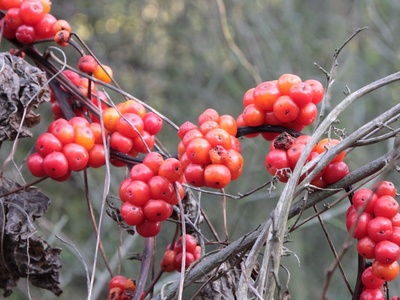
Black Bryony
A climbing vine with heart-shaped, glossy green leaves. It is the only member of the yam family native to the region. It produces small, greenish-yellow flowers, but is most noticeable in autumn when it bears strings of poisonous, brilliant red berries.
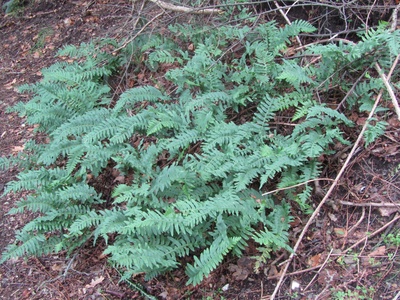
Common Polypody
A common evergreen fern that often grows as an epiphyte on mossy tree branches or on shady rock faces. It has leathery, pinnately divided fronds that arise from a creeping rhizome. It can withstand periods of drought by curling up and rehydrating later.
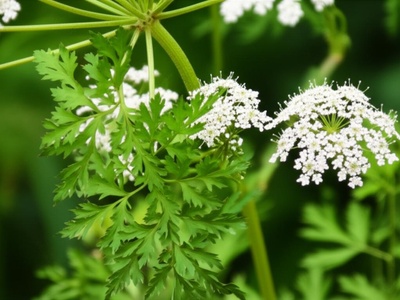
Caucasian Burnet
A perennial herb in the carrot family with finely divided, fern-like leaves. In summer, it produces umbels of small, white or pinkish flowers. Its leaves have a cucumber-like scent and taste and are sometimes used in salads.
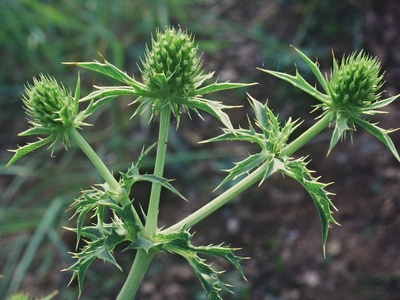
Field Eryngo
A spiny, thistle-like perennial with tough, leathery leaves. The entire plant is a pale, silvery-green. It produces globular flower heads surrounded by spiky bracts, giving it a distinctive architectural look. It is well-adapted to dry, overgrazed land.
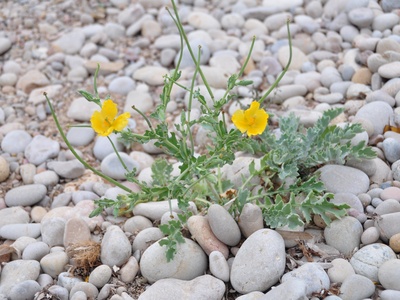
Yellow-horned Poppy
A striking coastal plant with wavy, blue-grey, cabbage-like leaves and large, bright yellow poppy flowers. Its most distinctive feature is the very long, slender, horn-like seed pod that can reach up to 30 cm. It is highly tolerant of salt spray and sand.
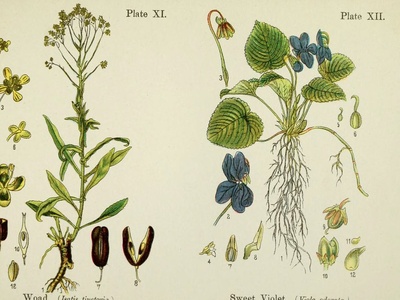
Woad
A biennial plant famous as the original source of blue indigo dye. In its first year, it forms a rosette of leaves. In the second, it sends up a tall stalk with clouds of small, bright yellow flowers, followed by black, dangling seed pods.
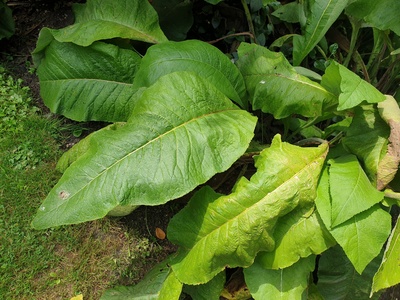
Elecampane
A tall, stately perennial with very large, rough leaves. In late summer, it produces large, sunflower-like yellow flower heads with narrow, shaggy rays. The root has a long history of use in traditional medicine as an expectorant.
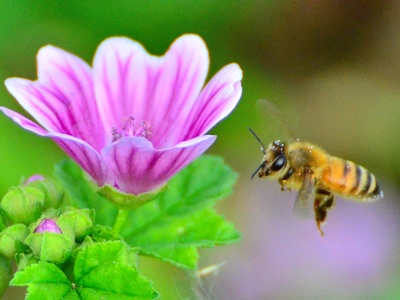
Common Mallow
A common and familiar wildflower with lobed, rounded leaves and attractive pinkish-purple flowers with dark stripes. The flowers and young leaves are edible and have been used in traditional medicine for their soothing, demulcent properties.
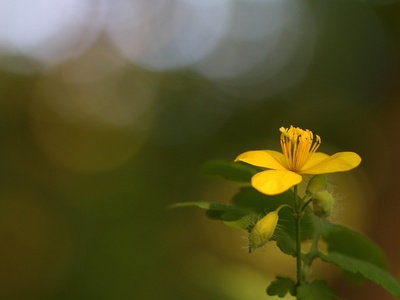
Greater Celandine
A perennial herb with brittle stems that exude a bright orange, acrid latex when broken. It has lobed, blue-green leaves and clusters of small, four-petaled yellow flowers. The latex has been used traditionally to treat warts.
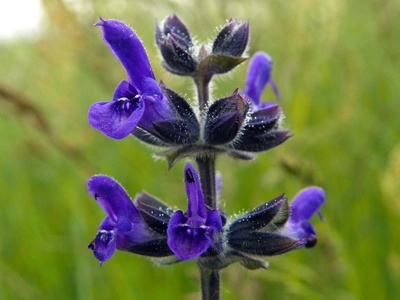
Wild Clary
A dramatic biennial sage that forms a rosette of large, hairy leaves in its first year. In its second year, it produces a tall, branching flower spike with large, colorful pinkish-lilac bracts and pale flowers. The entire plant is highly aromatic.
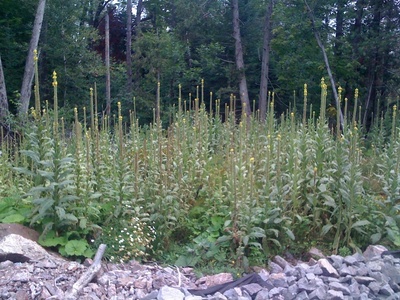
Mullein
A tall, stately biennial. In its first year, it forms a large rosette of thick, woolly, grey-green leaves. The following summer, it sends up a towering, club-like spike densely packed with large, bright yellow flowers.
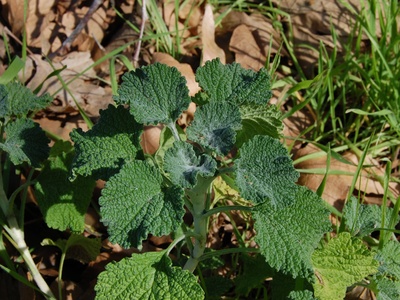
White Horehound
A perennial herb with wrinkled, woolly, grey-green leaves and a distinctive, bitter aroma. It has small, white flowers that grow in dense whorls around the stem. It has a long history of use in herbal medicine, particularly for coughs and colds.
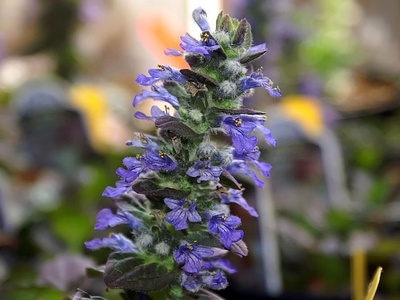
Creeping Bugle
A low-growing, mat-forming perennial that spreads by runners. In spring, it sends up short spikes of deep blue-violet flowers. It is an excellent groundcover plant for shady areas and is highly attractive to bees.
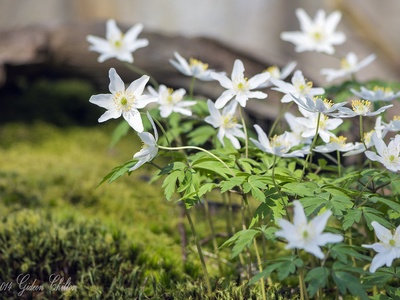
Wood Anemone
A delicate, early spring wildflower that carpets the floor of deciduous woodlands before the trees leaf out. It has star-like white flowers, often tinged with pink or purple on the outside, that nod in the breeze. It spreads via underground rhizomes.
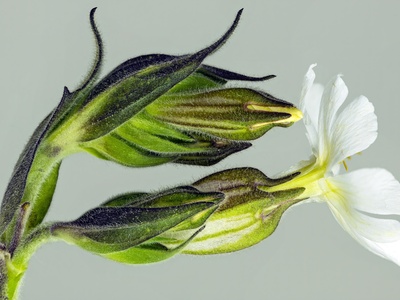
Bladder Campion
A perennial wildflower easily recognized by its inflated, bladder-like calyx, which is pale green with a network of purple veins. The white flowers have deeply notched petals and often open in the evening, attracting moths for pollination.
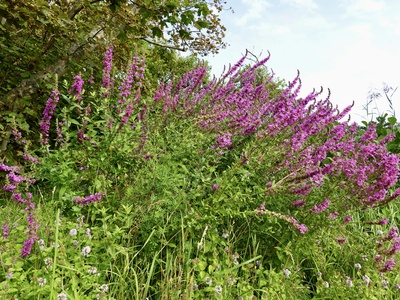
Purple Loosestrife
A tall, vigorous perennial that forms dense stands in wet habitats. In summer, it produces spectacular, long spikes of vibrant magenta or purple flowers. It provides a valuable nectar source for insects but can be invasive outside its native range.
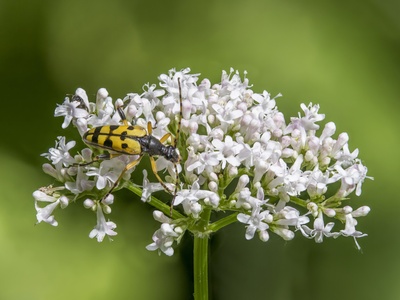
Common Valerian
A tall perennial with pinnately divided leaves and a strong, characteristic odor, especially from its roots. It produces flattened heads of small, fragrant, pale pink or white flowers in summer. The root has been used for centuries as a herbal sedative.
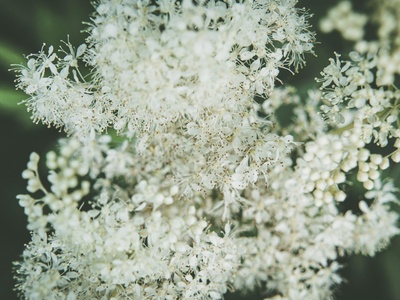
Meadowsweet
A tall, herbaceous perennial with dark green, pinnate leaves that are silvery-white underneath. In summer, it bears large, frothy clusters of tiny, highly fragrant, creamy-white flowers. The plant contains salicylates, compounds related to aspirin.
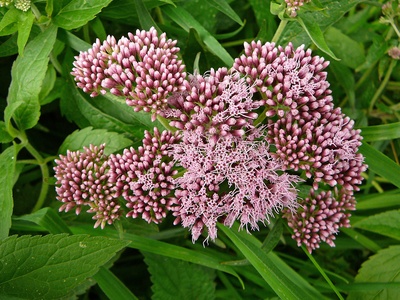
Hemp-agrimony
A tall, robust perennial with leaves that are divided into three to five leaflets, resembling those of hemp. In late summer, it produces fluffy, domed clusters of pale pinkish-mauve flowers that are a magnet for butterflies.
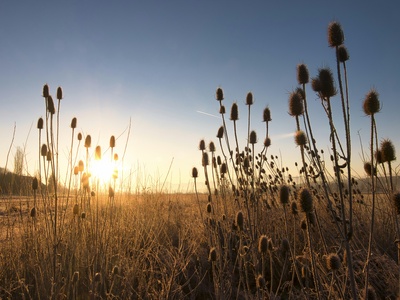
Wild Teasel
A tall, architectural biennial with a prickly stem and leaves that form water-collecting cups at their base. It produces a distinctive, egg-shaped flower head covered in tiny purple flowers. The spiky, dried seed heads persist through winter.
